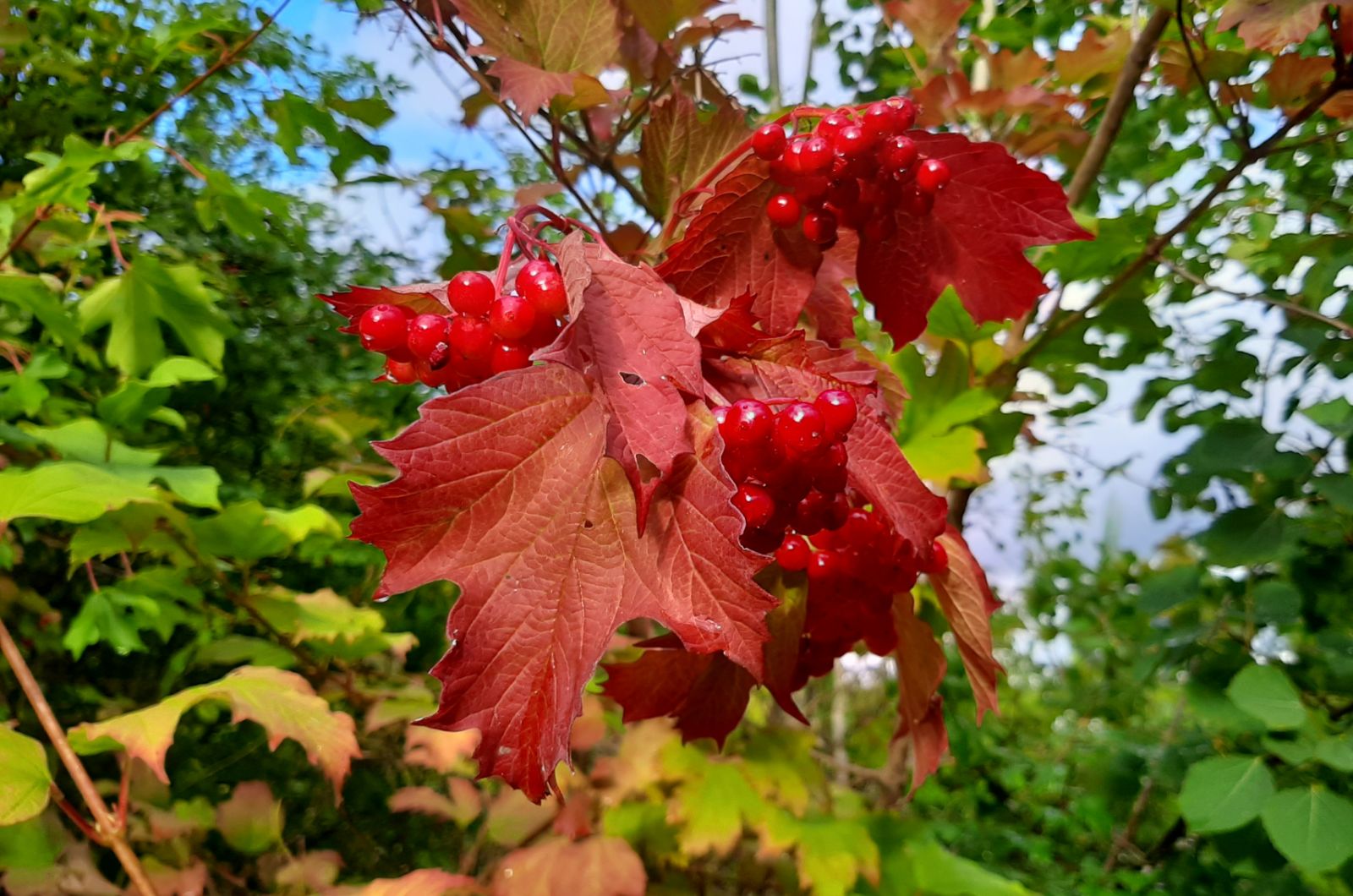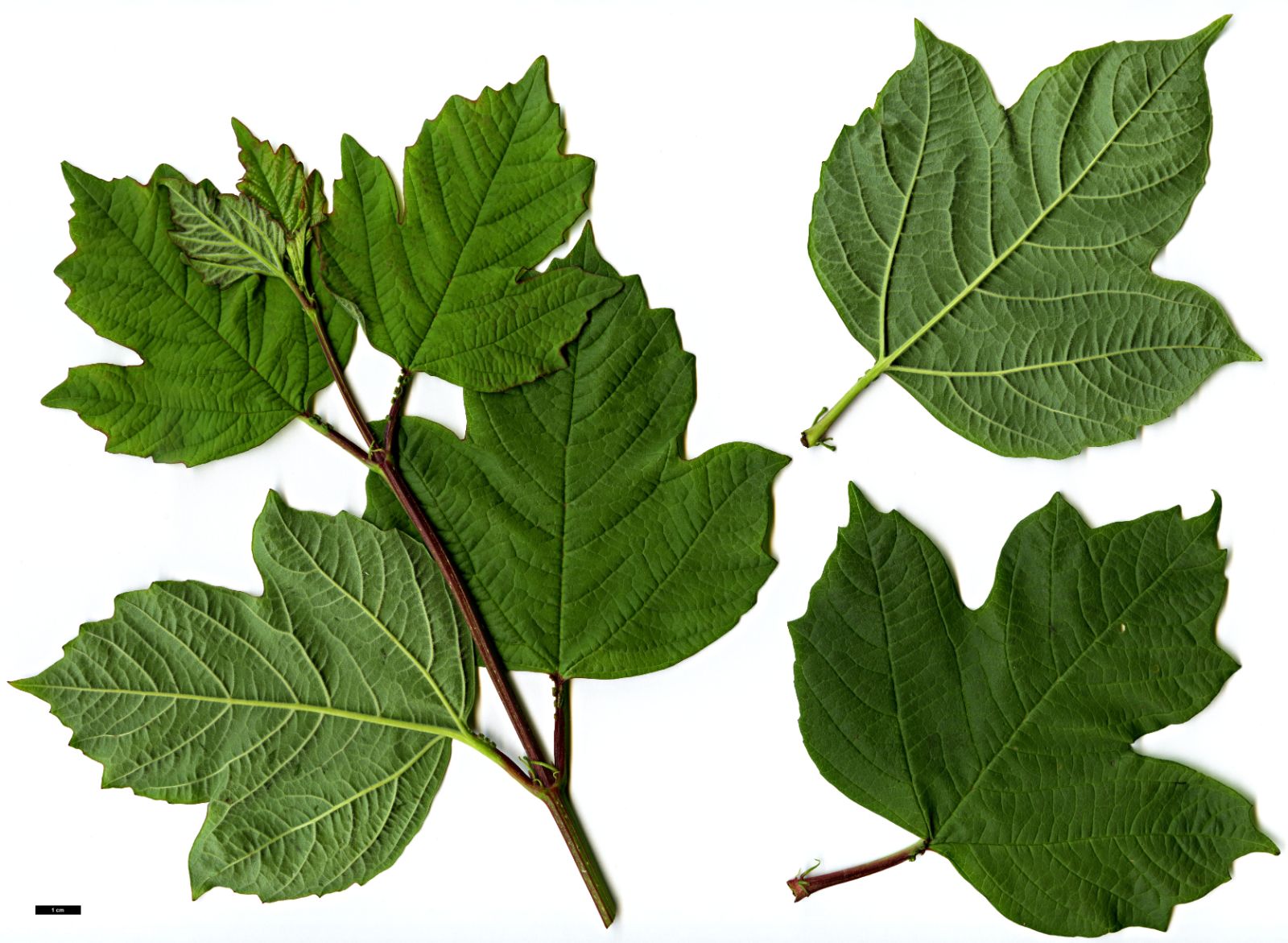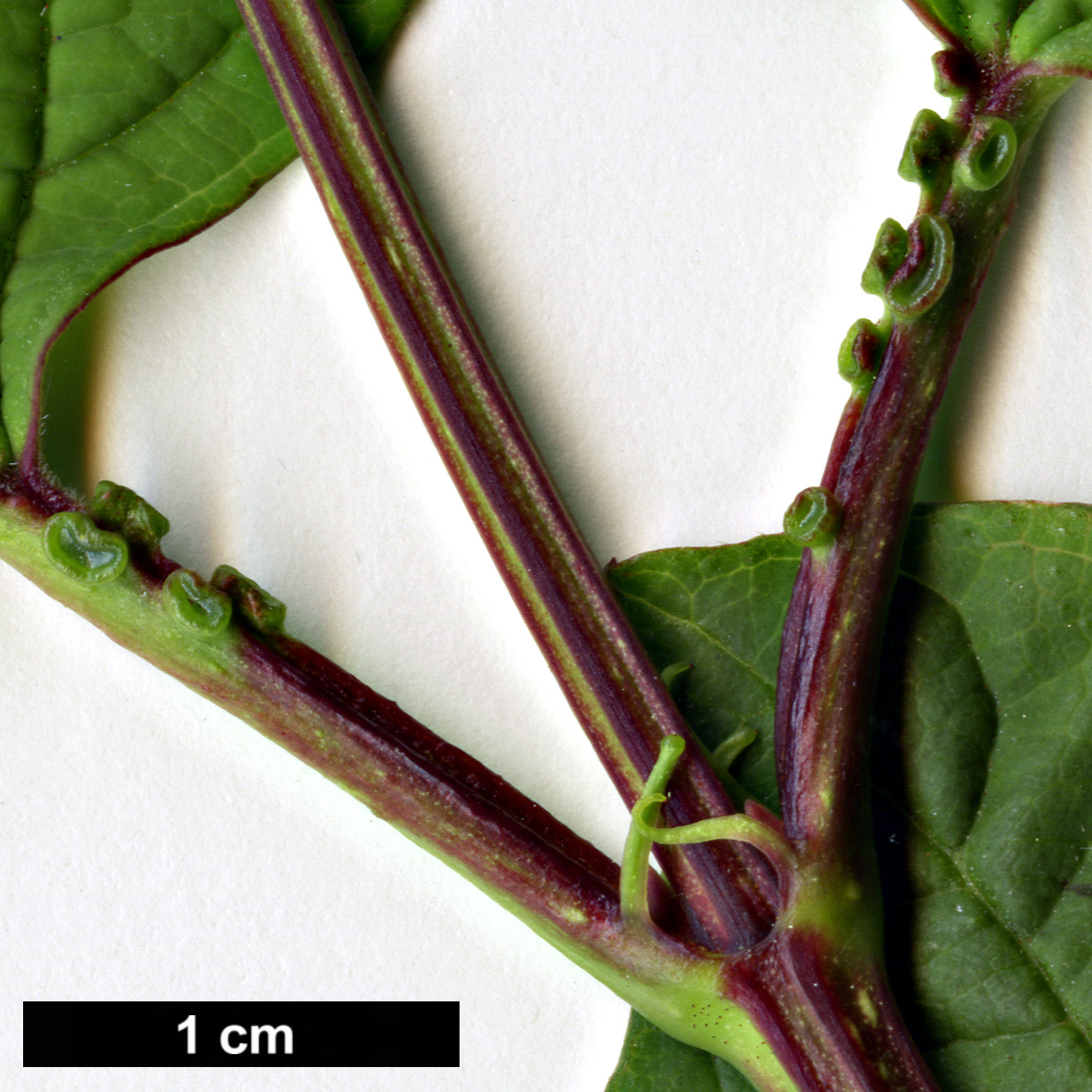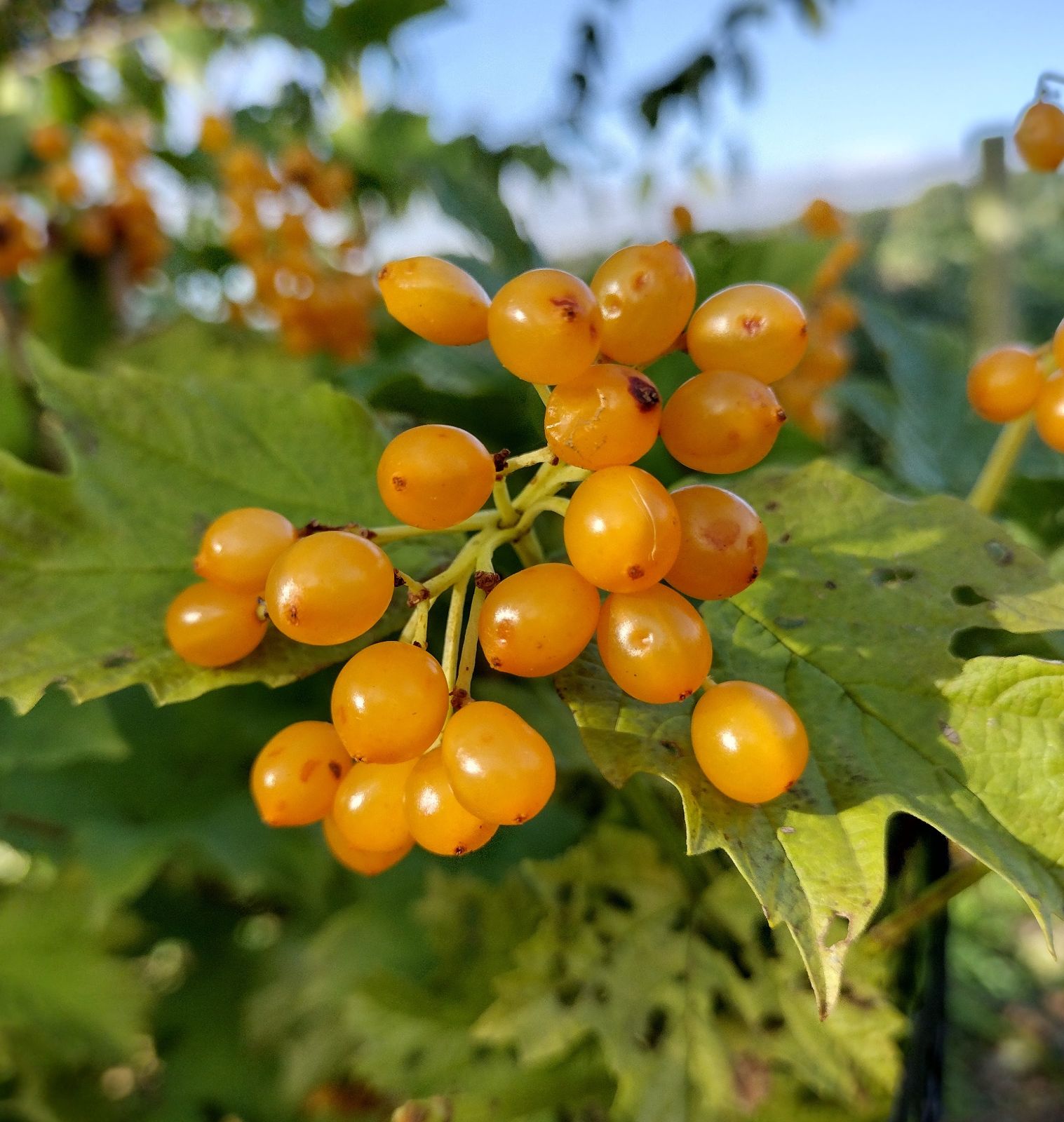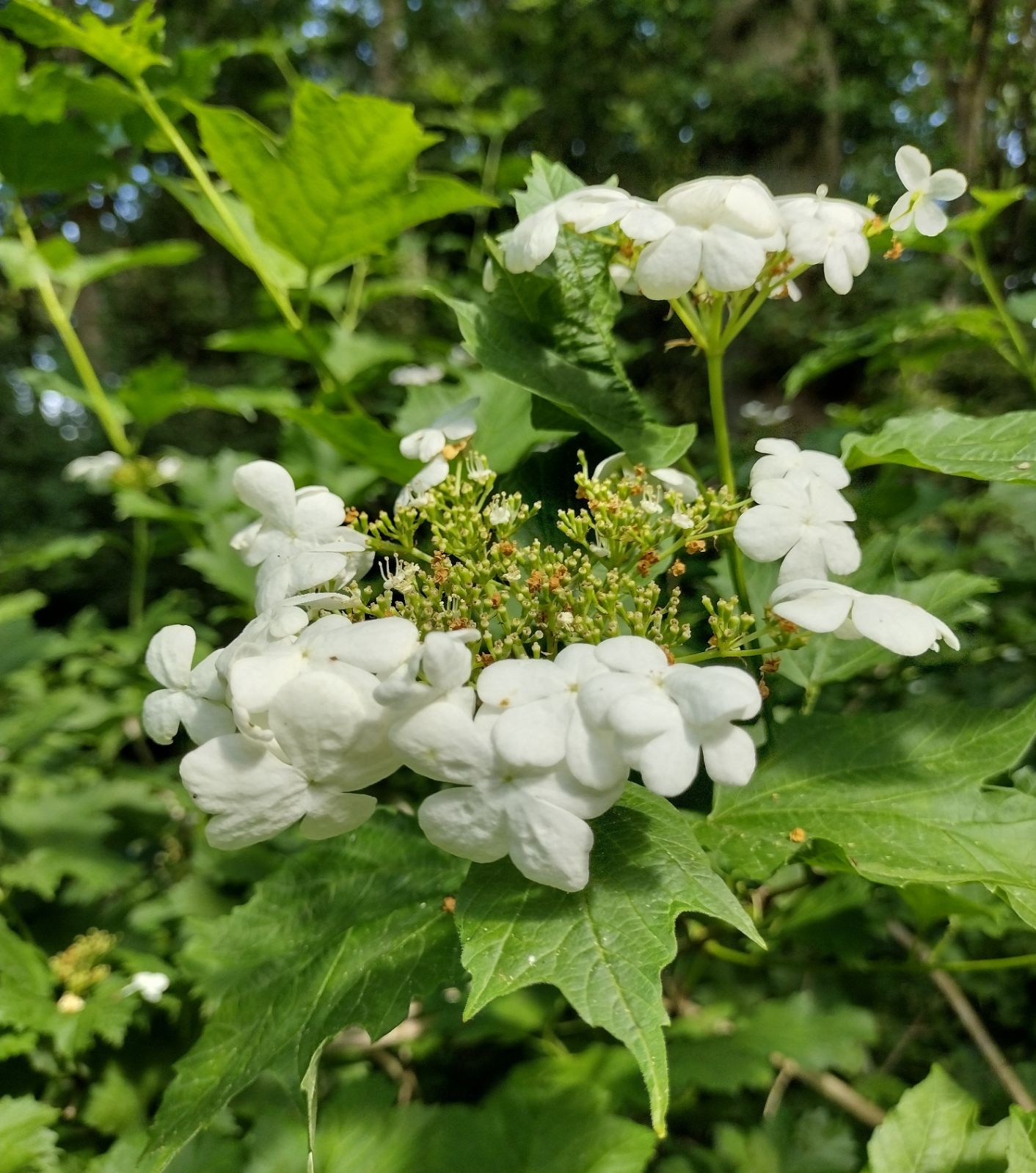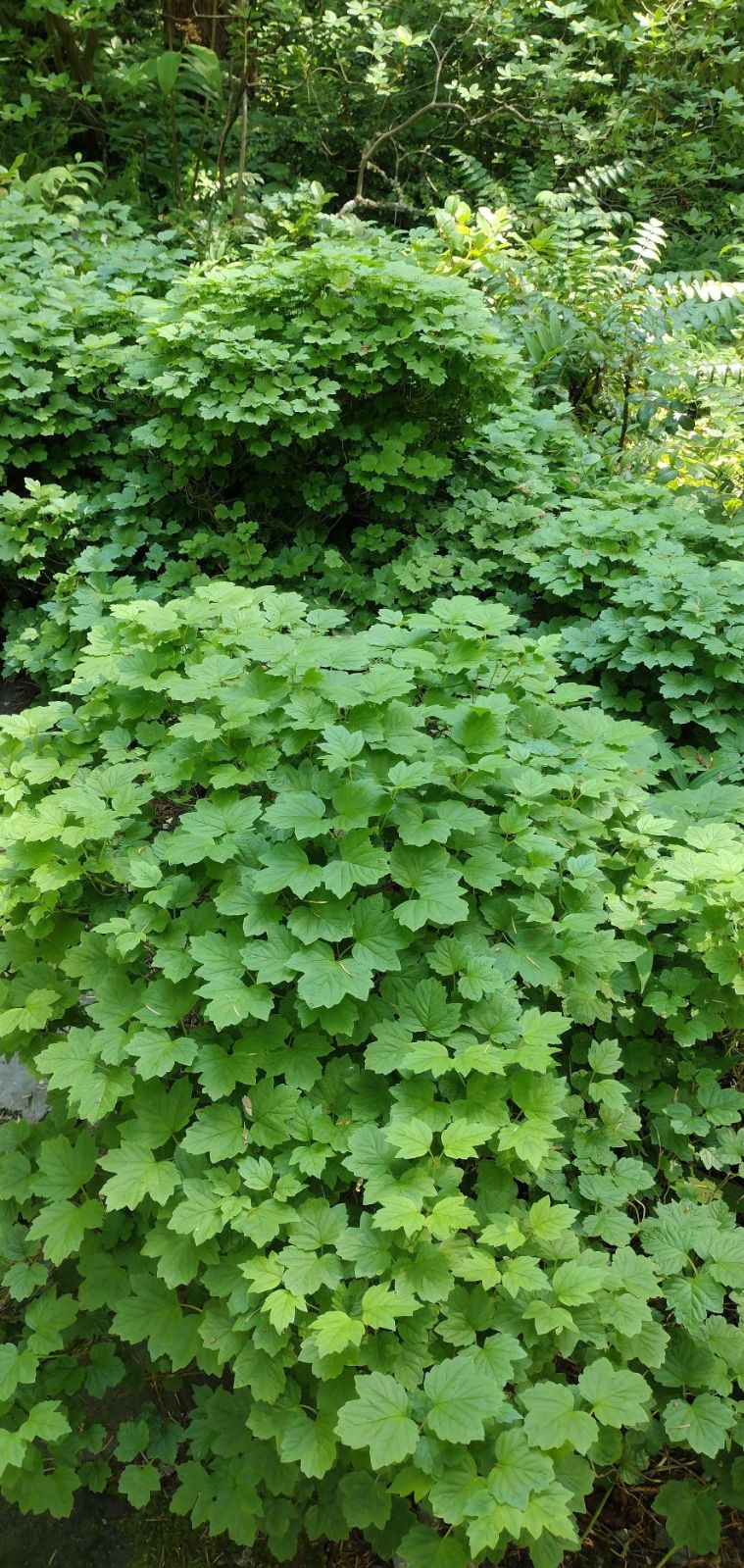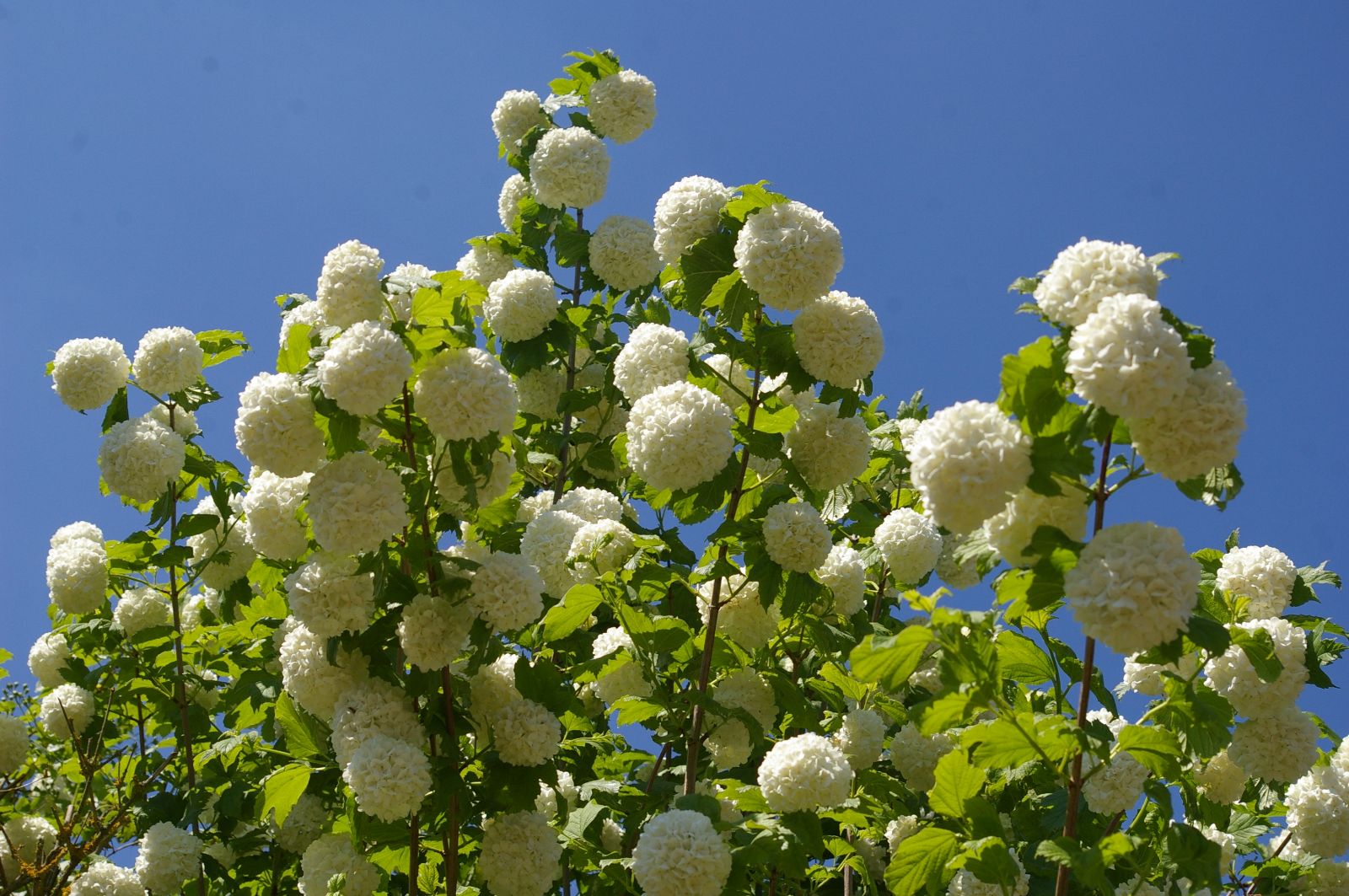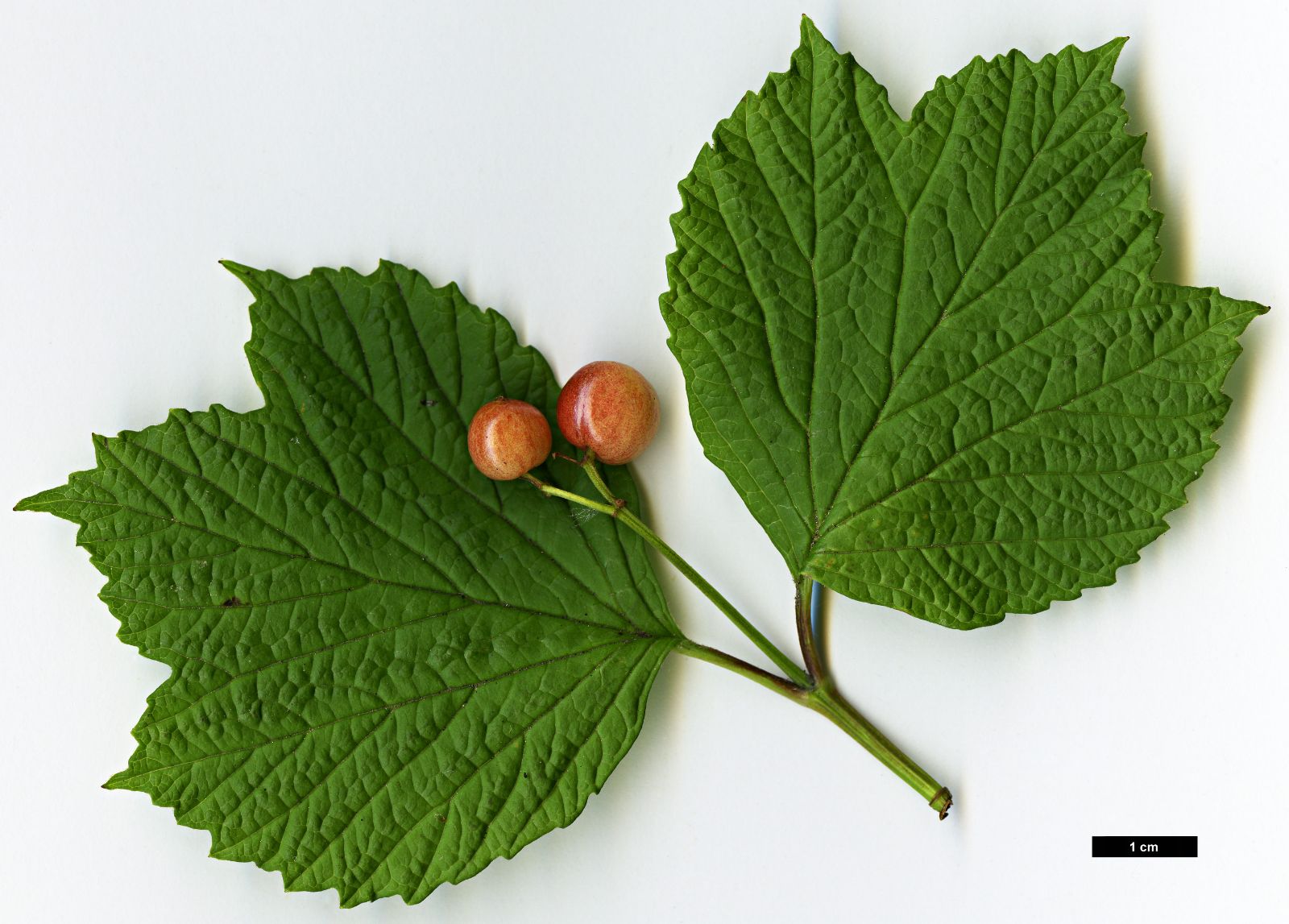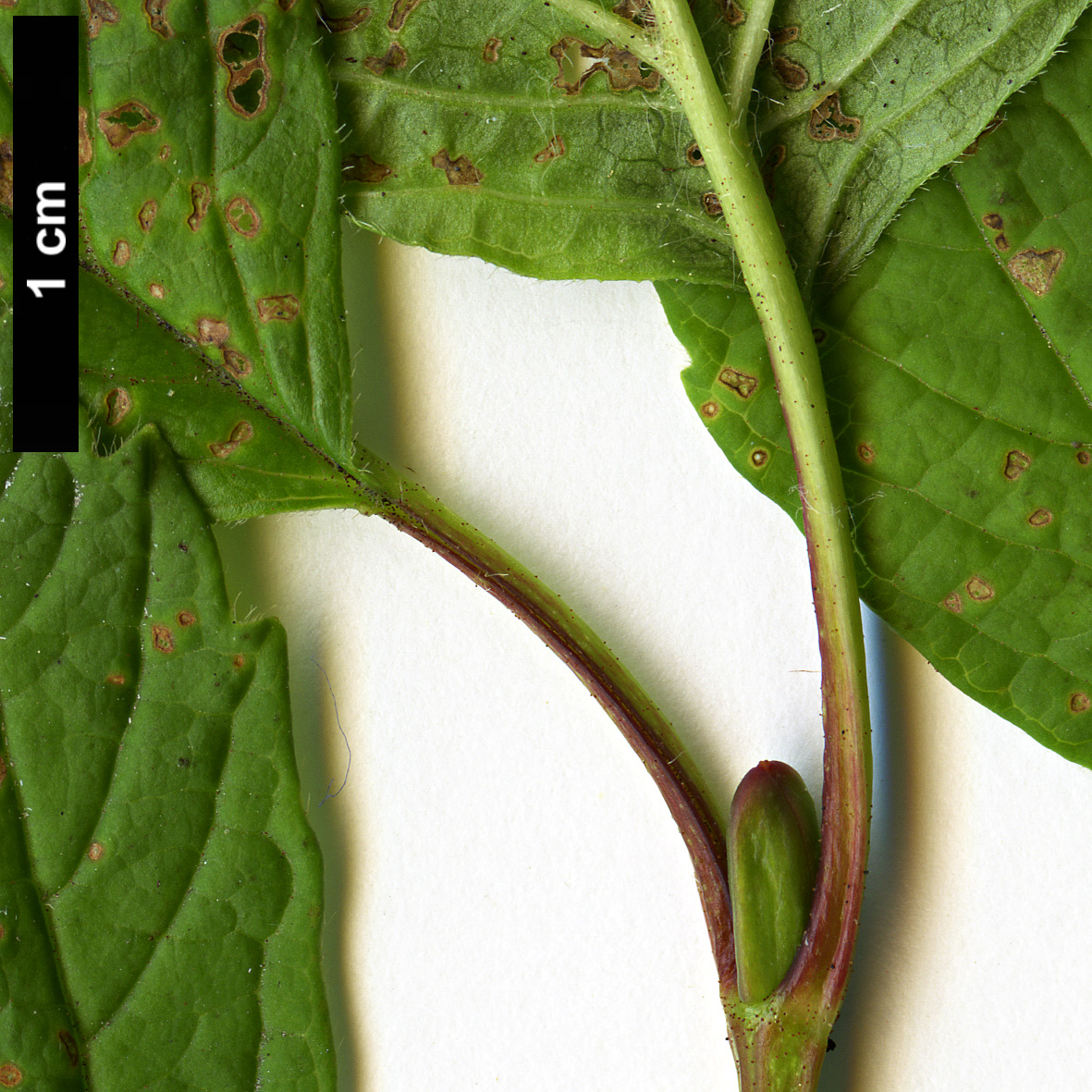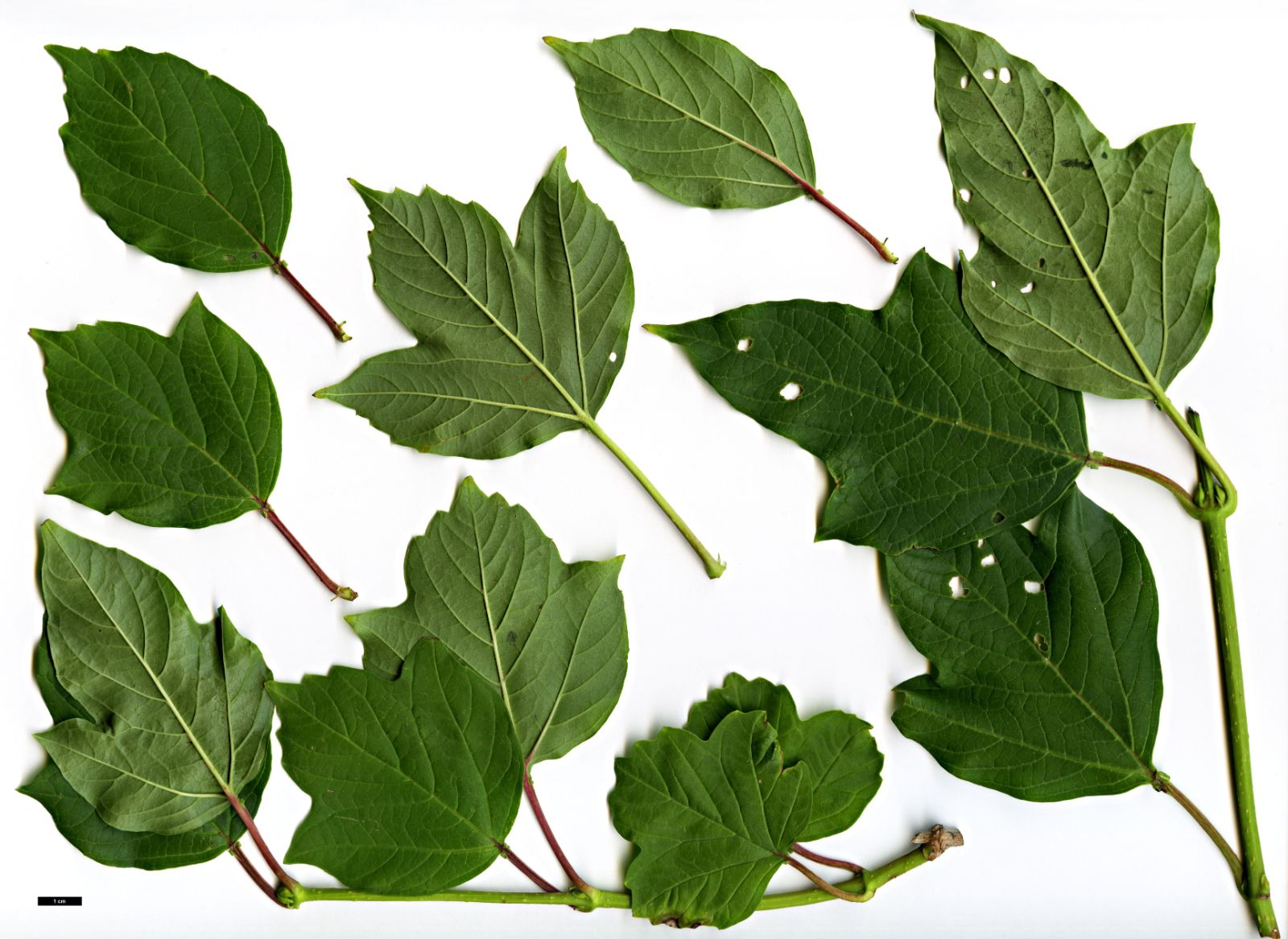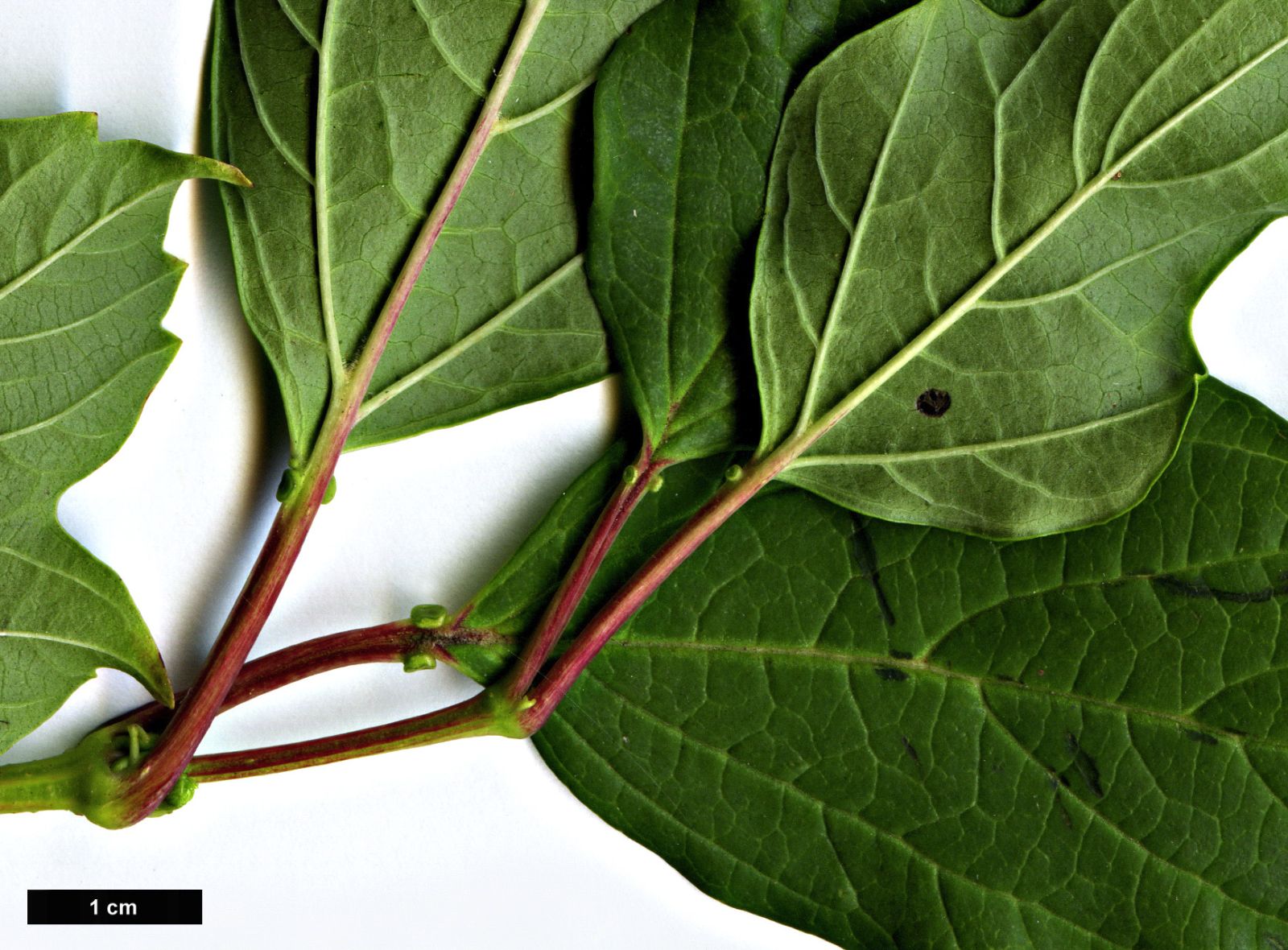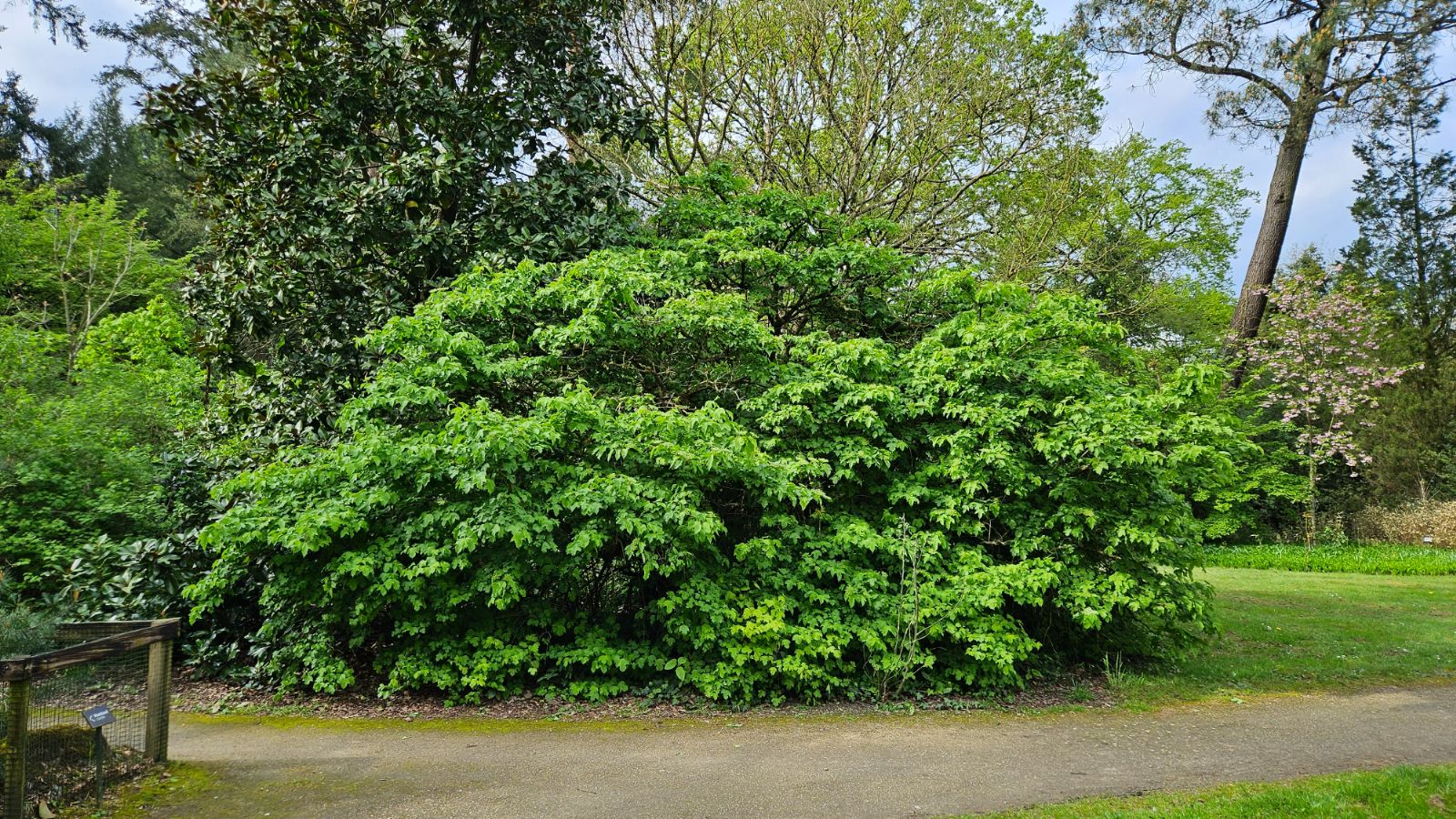Viburnum opulus
Credits
Article from Bean's Trees and Shrubs Hardy in the British Isles
Recommended citation
'Viburnum opulus' from the website Trees and Shrubs Online (treesandshrubsonline.
Genus
Common Names
- Guelder Rose
Infraspecifics
Other taxa in genus
- Viburnum acerifolium
- Viburnum betulifolium
- Viburnum × bodnantense
- Viburnum buddleifolium
- Viburnum burejaeticum
- Viburnum × burkwoodii
- Viburnum × carlcephalum
- Viburnum carlesii
- Viburnum cassinoides
- Viburnum cotinifolium
- Viburnum cylindricum
- Viburnum davidii
- Viburnum dentatum
- Viburnum dilatatum
- Viburnum erosum
- Viburnum farreri
- Viburnum foetidum
- Viburnum grandiflorum
- Viburnum harryanum
- Viburnum henryi
- Viburnum hupehense
- Viburnum japonicum
- Viburnum kansuense
- Viburnum lantana
- Viburnum lantanoides
- Viburnum lentago
- Viburnum macrocephalum
- Viburnum molle
- Viburnum nudum
- Viburnum odoratissimum
- Viburnum phlebotrichum
- Viburnum plicatum
- Viburnum propinquum
- Viburnum prunifolium
- Viburnum rhytidophyllum
- Viburnum rigidum
- Viburnum rufidulum
- Viburnum schensianum
- Viburnum setigerum
- Viburnum sieboldii
- Viburnum suspensum
- Viburnum tinus
- Viburnum utile
- Viburnum veitchii
- Viburnum wilsonii
- Viburnum wrightii
A deciduous shrub forming a thicket of erect, grey stems, 10 to 15 ft high; young wood glabrous, ribbed. Leaves three- (sometimes four- or five-) lobed, maple-like, 2 to 4 in. long, often as much or more wide, the base truncate, the lobes pointed, coarsely and irregularly toothed, dark green and glabrous above, more or less downy beneath; stalk 1⁄2 to 1 in. long, with two thin linear stipules at the base and large, concave glands near the leaf-blade. Cymes 2 to 3 in. across, with a border of sterile, showy white flowers, 3⁄4 in. in diameter, the centre composed of small fertile flowers; anthers yellow. It blossoms in early June. Fruits bright red, globose, 1⁄3 in. wide.
Native of Europe (including Britain), northwest Africa, Asia Minor, the Caucasus, and parts of Central Asia. Whilst in beauty of flower the Guelder rose is inferior to many viburnums, it is inferior to none in this country in its fruits, or in the rich hues of its decaying foliage. Many other species, no doubt, have fruits as beautiful, but they do not set them in our gardens with the certainty of this. Its only fault is that black fly (bean aphis) also like it.
From the Supplement (Vol. V)
V. sargentii. – This is not confined to north-east Asia (see page 709); it also occurs as far south as north-west Hupeh.
'Aureum'
Leaves bright yellow. This needs some shade.'Compactum'
Of lower and denser habit. Free fruiting. Award of Merit 1962. Not to be confused with ‘Nanum’.
'Fructu-luteo'
Fruits translucent yellow. In cultivation 1901 and probably much earlier (V. o. fructu-luteo Hort. ex Kew Hand-list; V. o. var. luteum Bean). Edwin Beckett, the garden manager at Aldenham, suggested that the name fructu-luteo should be used for a form with fruits pink at first, becoming dark chrome yellow, slightly tinged with pink (Gard. Chron., Vol. 88 (1930), p. 281.
'Nanum'
A curious dwarf form of tufted habit, growing 1 to 3 ft high. Its leaves are {3/4} to 1{1/2} in. wide. It rarely or never flowers.
'Notcutt's Variety'
A vigorous bush to about 12 ft high, with larger fruits than usual and fine autumn colour.'Roseum' ('Sterile') Snowball tree
In this form all the flowers are of the sterile kind, and the cyme in consequence becomes transferred into a globose head of white, closely packed blossoms, 2 to 2{1/2} in. across. This is one of the most beautiful of hardy shrubs, but of course the fruiting beauty of the common Guelder rose is sacrificed. ‘Roseum’ has been known in European gardens since the 16th century and was usually called ‘Sambucus rosea’ or Rose Elder, probably from a fancied resemblance of the florets to single roses. The name ‘Guelder Rose’, now used for the species as a whole, originally belonged exclusively to this double form and suggests that it originated in the region of the Netherlands known as Gelderland. Miller called the wild form ‘Marsh Elder’ or ‘Guelder Rose with flat flowers’.
V edule (Michx.) Raf.
Synonyms
V. opulus var. edule Michx.
V. o. pauciflorum Raf.
V. pauciflorum (Raf.) Torr. & Gr
Although allied to V. opulus and with similar foliage, this differs in the absence of sterile flowers from the inflorescence. It could be confused with V. acerifolium, but differs in its red fruits and in having winter-buds with a single pair of outer scales. It is of wide distribution in N. America, ranging across the continent in high latitudes, south in the mountains. The fruits are used for making jam.
V sargentii Koehne
An ally of V. opulus in N.E. Asia, introduced to Europe through Prof. Sargent in 1892. It is a coarser growing shrub with often larger leaves, a corky bark, and smaller fruits. It is not so useful and well-doing a shrub as V. opulus in Britain, starting earlier into growth, and being subject to injury by spring frosts. There is a yellow-fruited form – f. flavum Rehd – which comes partly true when raised from seeds (see D. Wyman, Shrubs and Vines (1969), p. 494). This is in cultivation in Britain and received an Award of Merit in 1967. In ‘Onondaga’ the young leaves are coloured deep bronze and retain a tinge of that colour when older. Flower buds red. This very ornamental viburnum was raised by Donald Egolf at the United States National Arboretum and is cultivated in the Hillier Arboretum near Romsey.
var. americanum Ait.
Synonyms
V. trilobum Marsh
This is the American race of V. opulus, differing from it in minor characters such as the more glabrous undersides of the leaves, the shallower, broader channel of the petiole, and the smaller, convex or club-shaped petiolar glands. It is of wide distribution in Canada and the northern USA, as far west as British Columbia and Washington. It is known in N. America as ‘cranberry’; the fruits are pleasanter to the taste than those of its Old World ally and are used to make jam.

